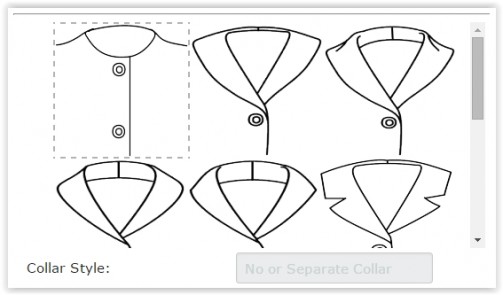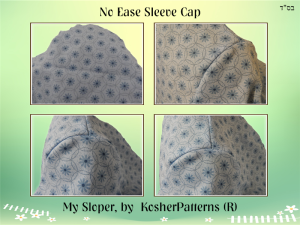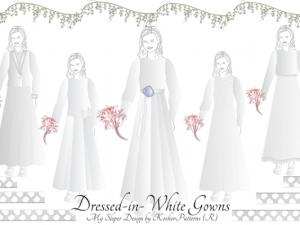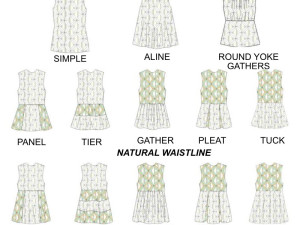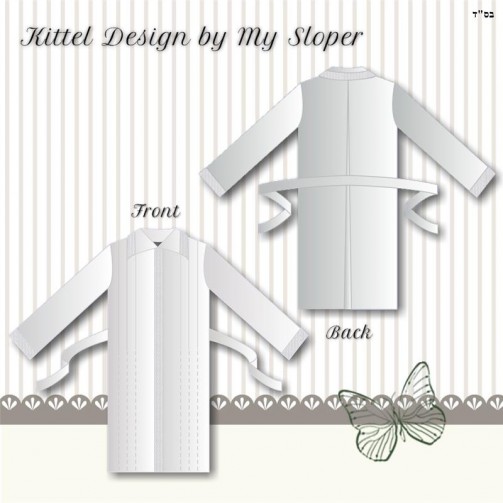
Profile
Head over to the Jacket/Coats tab. Enter your custom profile for a Jewish male.
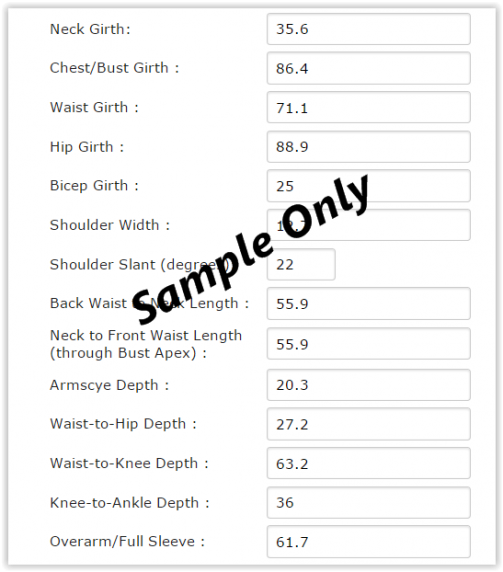
Kittle Sample Profile
Coat Ease
The default ease for a Jacket/Coat is as follows. Note that the Neck Ease of 2-cm is added to the overall Neck Girth. You can change any of the ease values to make it work for you. When you choose a separate collar from the Neckwear-Collars tab (see below), you will need to add this ease to the Neck Girth measurement.

Default Jacket/Coat Ease
Collar Style
Select the first icon, No/Separate Collar.
Head over to the Neckwear=Collar Tab and pick a collar for your kittel. For this sample, we choose a Traditional Collar.
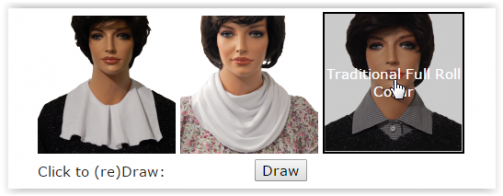
Traditional Collar
We then style the collar as follows. The highlighted areas show what are needed: Neck Girth, Back Collar Width, Unit (in or cm), Shoulder Slant and Collar Tip. Remember we need to add the 2-cm Neck Ease to our Neck Girth. Whem we are satisfied, we click the Draw button to draw the pattern and click Print to print to PDF.
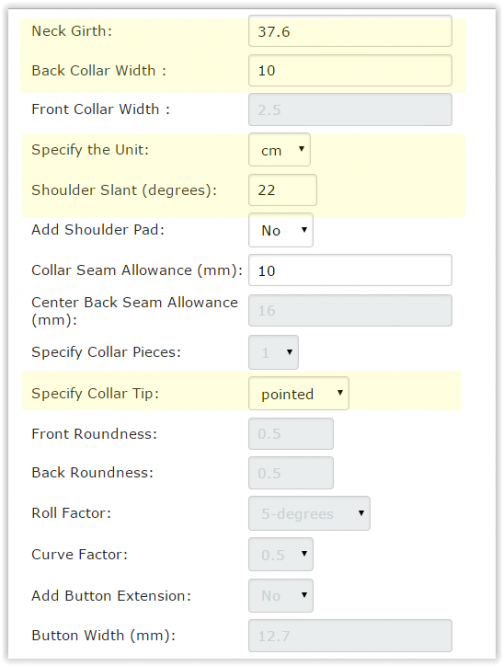
Kittel Collar Styling
Coat Styling
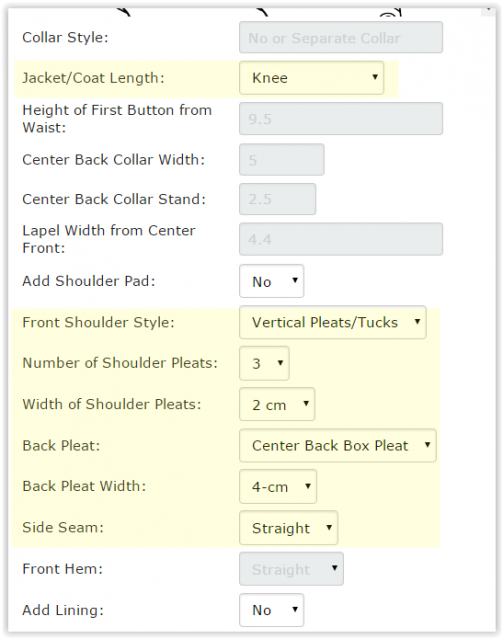
Kittel Styling
We return to the Jacket/Coats tab and continue styling our kittel. Since a kittel is usually worn at knee length, we select the jacket/coat length to be Knee instead of other options (drop-waist, hip, 2-in below the hip, and mid-calf). We ignore the shoulder pad option.
We can choose a plain kittel that looks like a lab coat or we can style it with pleats. For our sample, we choose Front Shoulder Pleats with 3 pleats of 2-cm wide each and a Center Back Box Pleat of 4-cm wide. When you sew the back pleat, you can sew it as box pleat or inverted box pleat. We then choose a straight side seam because this is for a man’s coat. We ignore the lining and use the default.

Kittel Opening
We then style the opening of the kittel. A kittel normally has a front button-down opening. We can choose from three button-down openings: Add-on, Separate, or Faced button-stand. The Add-on button-stand is easy to sew; the Separate button-stand allows you have contrasting fabric for the button-stand that matches the collar and sleeve cuffs (if any); and the Faced button-stand is hidden from view as it is turned inside the garment.
Then we click Draw Back Coat to preview the pattern generated for the Back Coat. At this point, we may tweak the sleeve cap if needed and re-draw the pattern. If we are happy with the back pattern, we then draw the front pattern. When we are happy with both patterns, we can print each pattern separately via the Print button.
Sample Kittel Pattern
Here is a sample drawing of the front and back of a kittel styled by My Sloper. Note that the belt is not included in the pattern and you will have to generate that separately with ease based on your desired width and length. The front pleats which run from the shoulder down to the hem may be sewn partially until the chest or waist level and left open below.

Front Kittel with Front Shoulder Pleats and Separate Button-stand
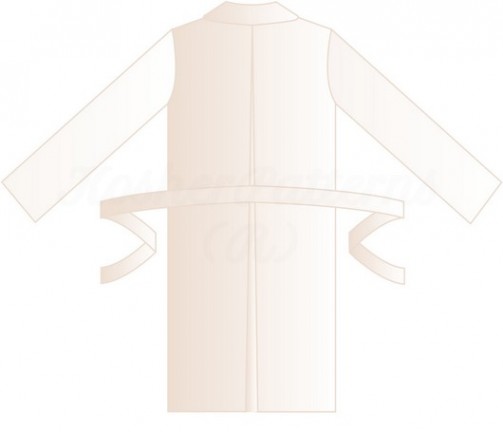
Back Kittel with Center Back Pleat
Kittel Decorations
Commercial kittels come with fancy decorations which include trims. We can sew a wide ribbon along the sleeve hem line, collar border and front button-stand and replace the regular buttons with snap buttons underneath the front button-stand.

Front Kittel with Decorations
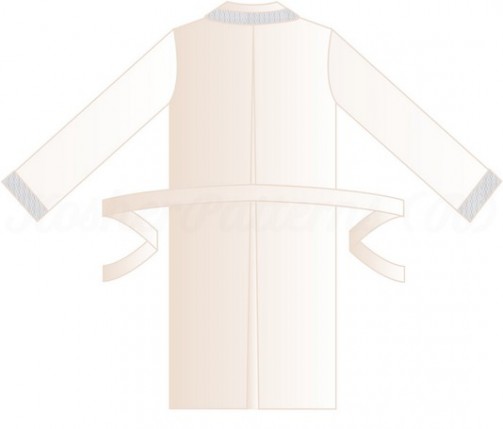
Back Kittel with Decorations
Kittel Buttons Overlap
Unlike Western secular mens’ wear which follow the left-over-right button overlap, a kittel follows the right-over-left convention. Here’s a snippet of this tradition from the article, ‘The Man in the Glass Case':
There are two more customs I would like to note here. In the world of Western fashion, men button their garments left over right. The origin of this custom, I am told, was to make access to weapons easier. When you meet a stranger be on guard and have your weapon ready. To ensure that you bear no malice stretch forth your right hand and shake to show you conceal no weapon.
Jews have no fear of this. Our garments are traditionally buttoned right over left because we bear no weapons and when we meet we need not show that our hands are empty. Instead, we say: “Shalom” (“Peace!”) The Kabbalahsays that the right side of a person should always take precedence over the left, for the right side of man signifies kindness while the left signifies sternness, justice and retribution. Just as G-d created the world primarily out of love and kindness, so love and kindness should predominate in men’s dealings with one another. Therefore one buttons the right over the left even though this may hamper the drawing of a weapon. — the Man in the Glass Case, Chabad.org
Learn More About My Sloper
We hope you enjoy this tutorial of how to design a kittel using My Sloper Version 1.8. Besides a kittel, you can also make other styles of jackets and coats. We look forward to working with you to make modest and kosher garments for children and adults. To learn more about My Sloper, please visit our front page.
